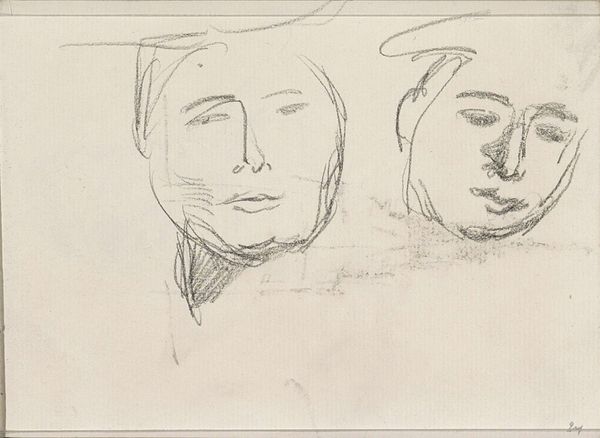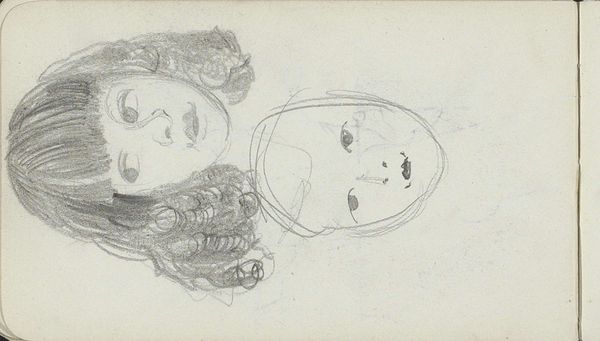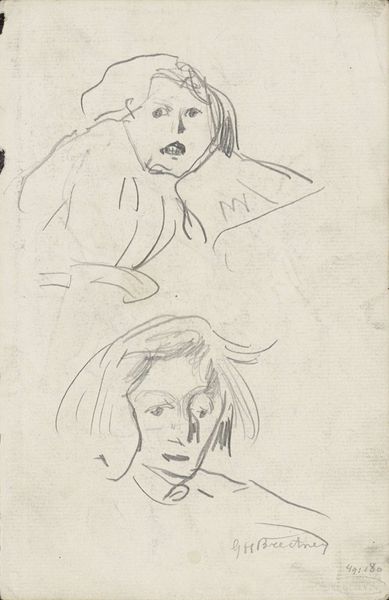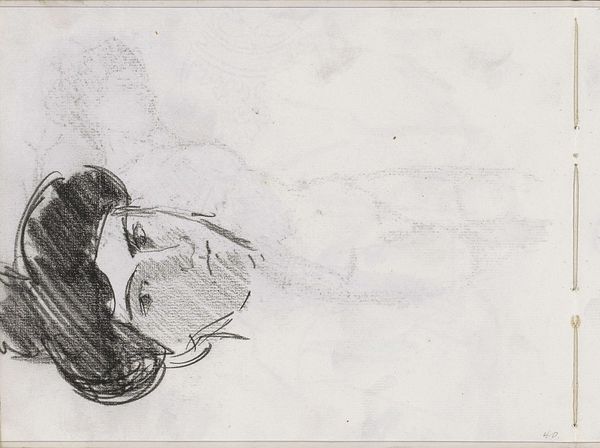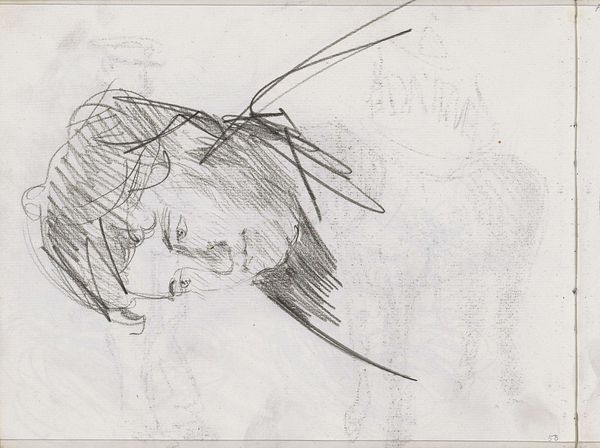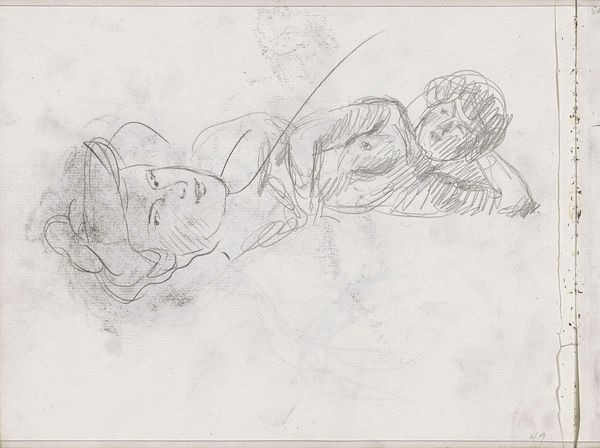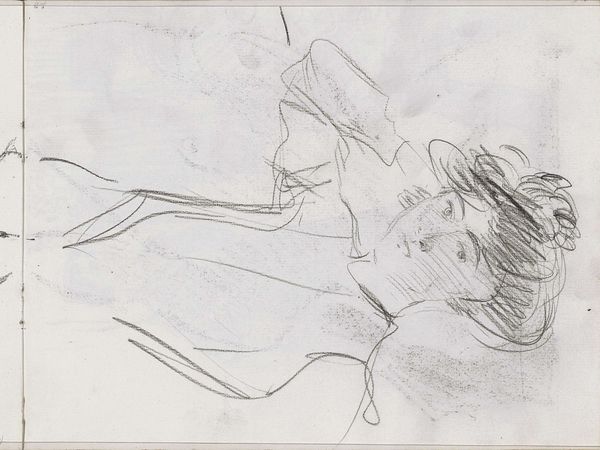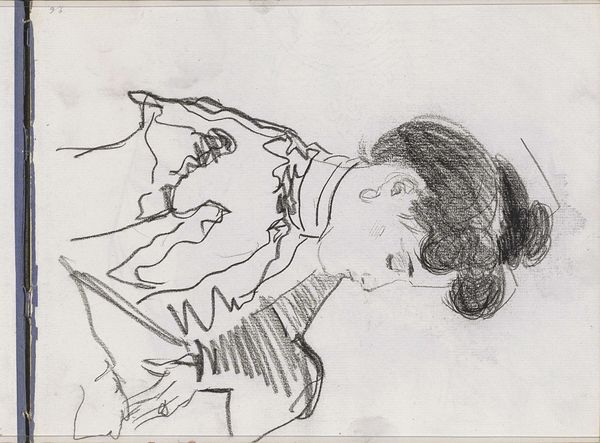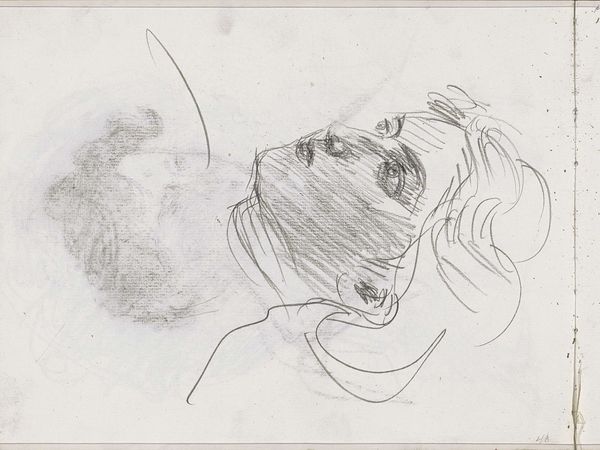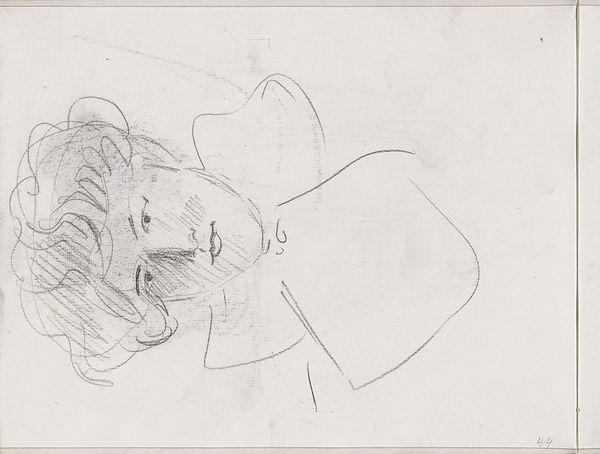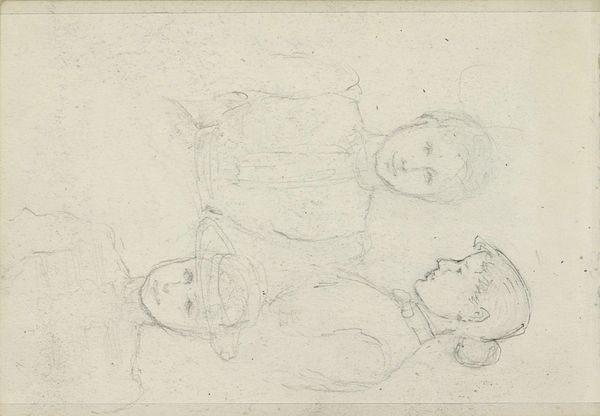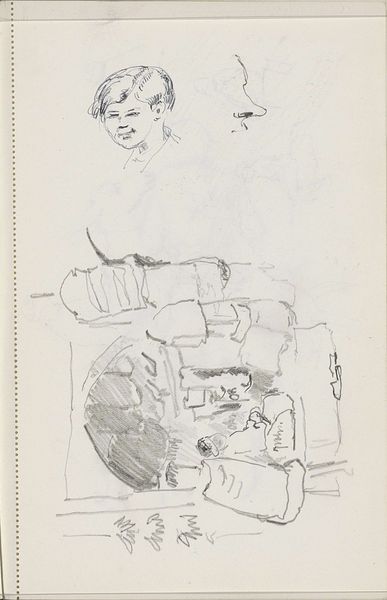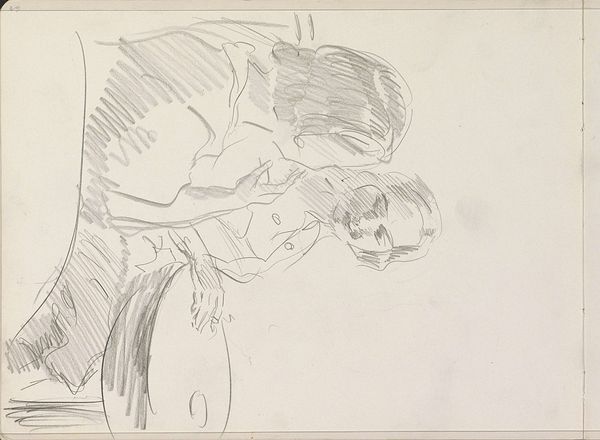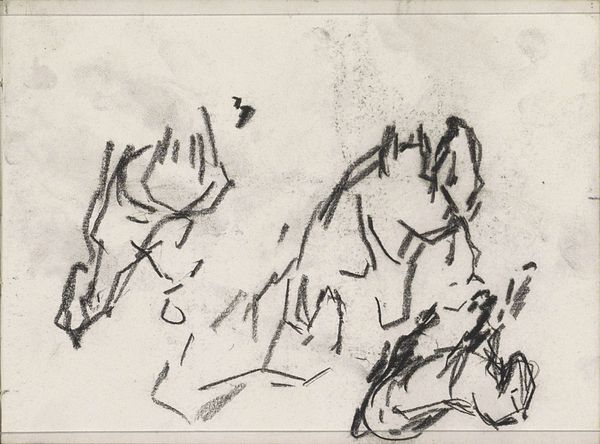
Copyright: Rijks Museum: Open Domain
Editor: So this is "Vrouwenhoofden met hoeden, mogelijk vari\u00e9t\u00e9artiesten," a pencil drawing by Isaac Israels, sometime between 1875 and 1934. The loose sketch style gives it a very immediate, intimate feel, like flipping through a personal sketchbook. What stands out to you about this piece? Curator: The real intrigue for me lies in the material conditions of its production. Pencil drawings like these aren't simply about capturing likeness; they are a form of artistic labor, tied to specific economic and social contexts. Israels was likely observing performers, considering their attire, perhaps for later, more developed works. How do their hats and bearing speak to their profession, and Israels's own engagement with popular culture? Editor: That's interesting – I hadn't thought about it in terms of labor. The 'variete artiesten' title implies performance and the world of entertainment... Curator: Exactly! These sketches hint at the broader entertainment industry and Israels' role within it. The use of a relatively inexpensive material like pencil makes art accessible. It is directly related to the conditions of artistic production, consumption, and perhaps even Israels' social positioning at the time. These women were making a living through performance, Israels through art. Where do their respective modes of "production" intersect? Editor: So, the pencil drawing isn't just a preliminary study; it’s also a document of the artist’s working process, revealing social dynamics at play. It encourages us to question traditional notions of art by situating it within broader frameworks. Curator: Precisely. This pushes us beyond aesthetic appreciation and challenges us to consider art's connection to labor, materiality, and class. Hopefully, that lens inspires new connections as you make and understand art yourself! Editor: I’ll definitely think about the “making of art” and the socioeconomic context next time. Thanks!
Comments
No comments
Be the first to comment and join the conversation on the ultimate creative platform.
